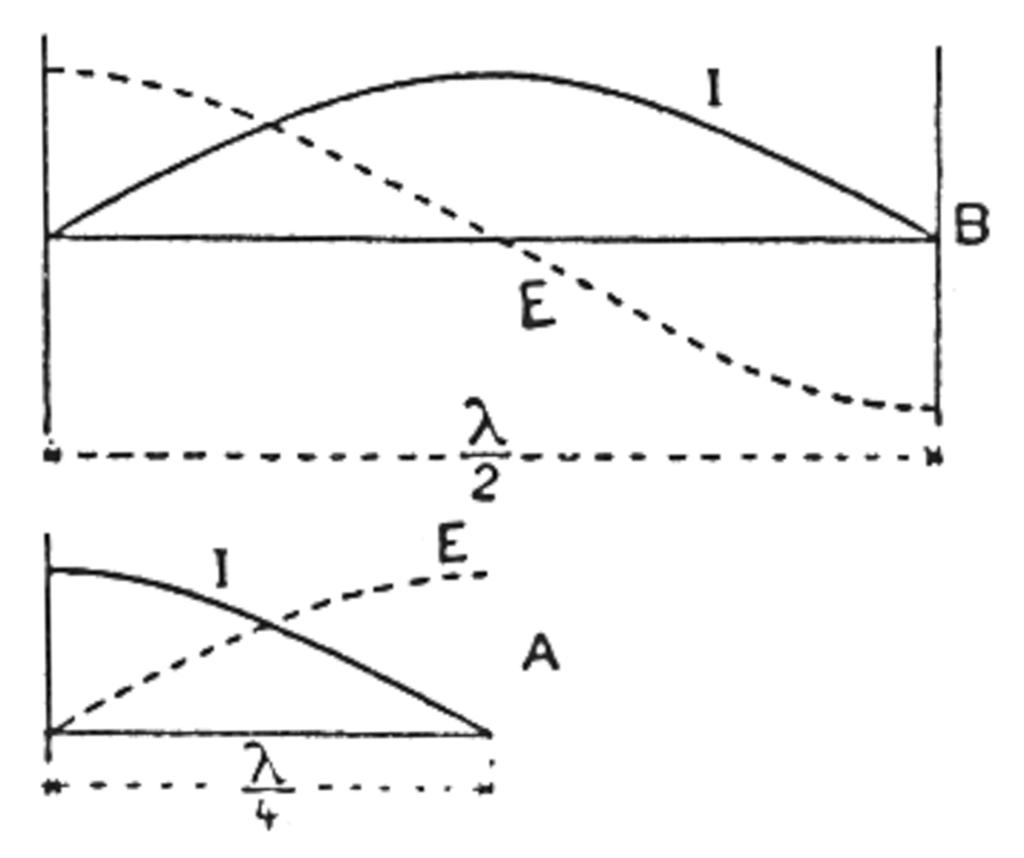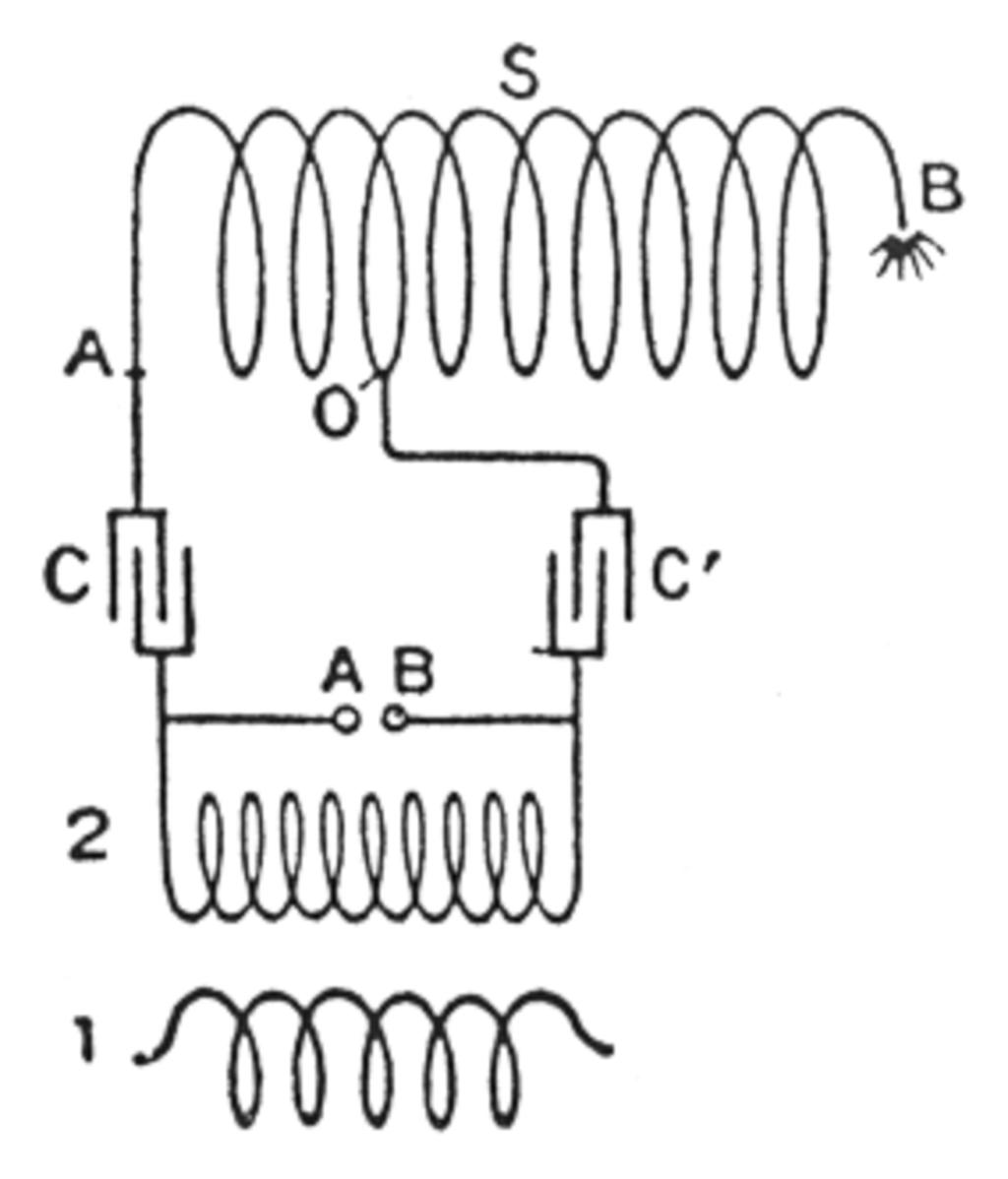TCBA Volume 15 - Issue 1
Page 14 of 18
Another arrangement brought forward by Messrs. d'Arsonval and Gaiffe, consists in connecting between the terminals of circuit 2 (Fig. 96) an auxiliary condenser and connecting the same terminals to the spark-gap, A B, by means of two resistances.
In order to prevent the formation of an arc, it is important that the balls of a gap be as highly polished as possible; each spark corrodes the surface where it forms, and the roughness thus produced facilitates the passages of discharges and leads the disruptive e.m.f. rapidly to the formation of an arc.
In the majority of high-frequency systems, the length of circuit 4 is about the same as the length of the wave of the oscillations developed in circuit 3; if by proper adjustment of the capacities, C and C', a length of wave is obtained which is equal to four times the length of circuit 4, stationary waves will be developed in the latter (Fig. 97, A); if one of the extremities is connected to the earth, its potential, E, is zero, but it carries a maximum value of current; on the other hand, at the free end of the circuit, the values of the current is zero, but the potential is a maximum. When resonance does not exist between circuits 3 and 4, the difference of potential obtained between the balls, a and b, is less; therefore, it is advantageous to tune the two circuits in order to obtain the greatest effect with the least amount of energy (B. No. 48).
39. Resonators. - An apparatus introduced by Tesla is employed to a great extent to-day by medical men and is known as the resonator. Although the effects produced are quite complicated, they can be reduced to Tesla transformers, in which the circuits are simply insulated in air, and in which the tuning between the primary and the secondary circuit is exactly adjusted.


